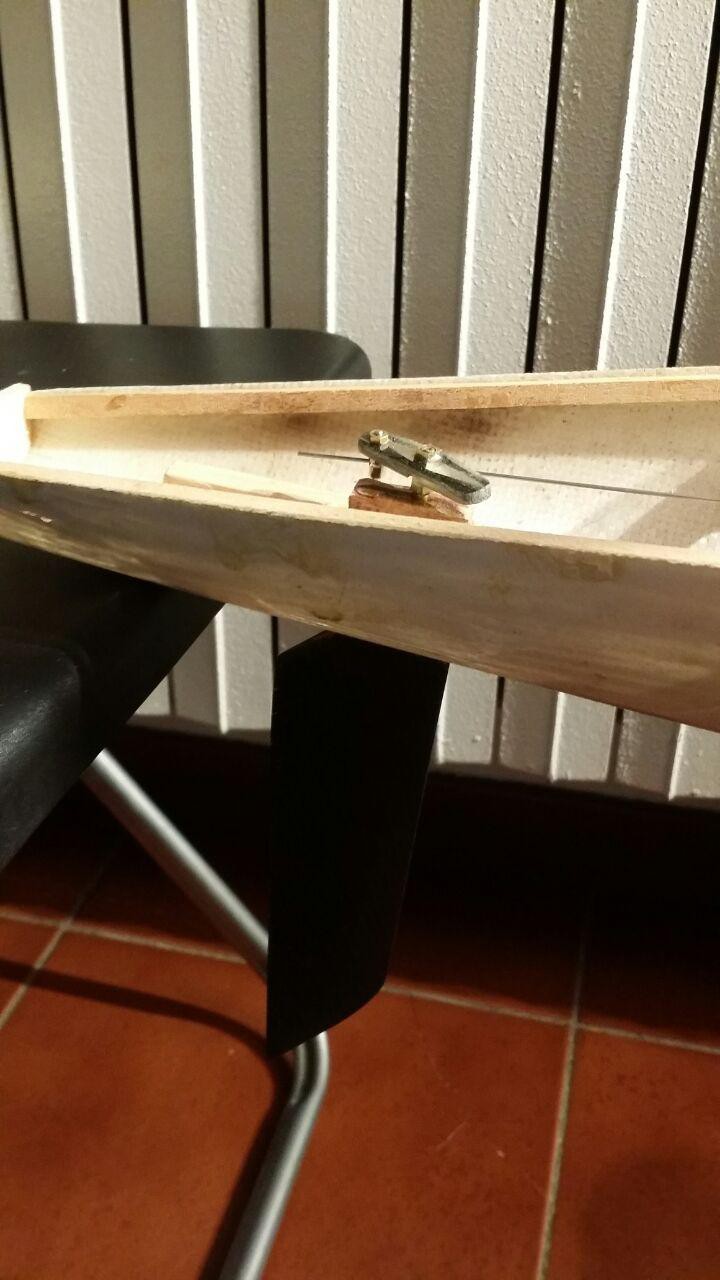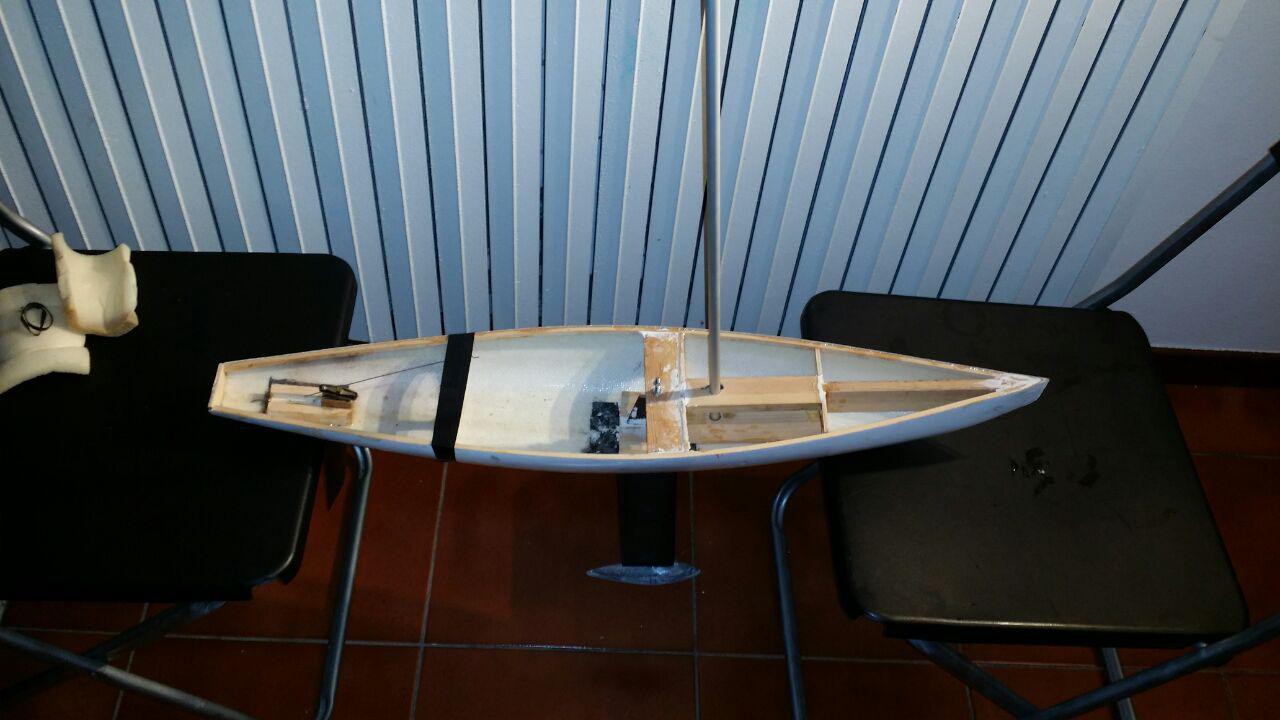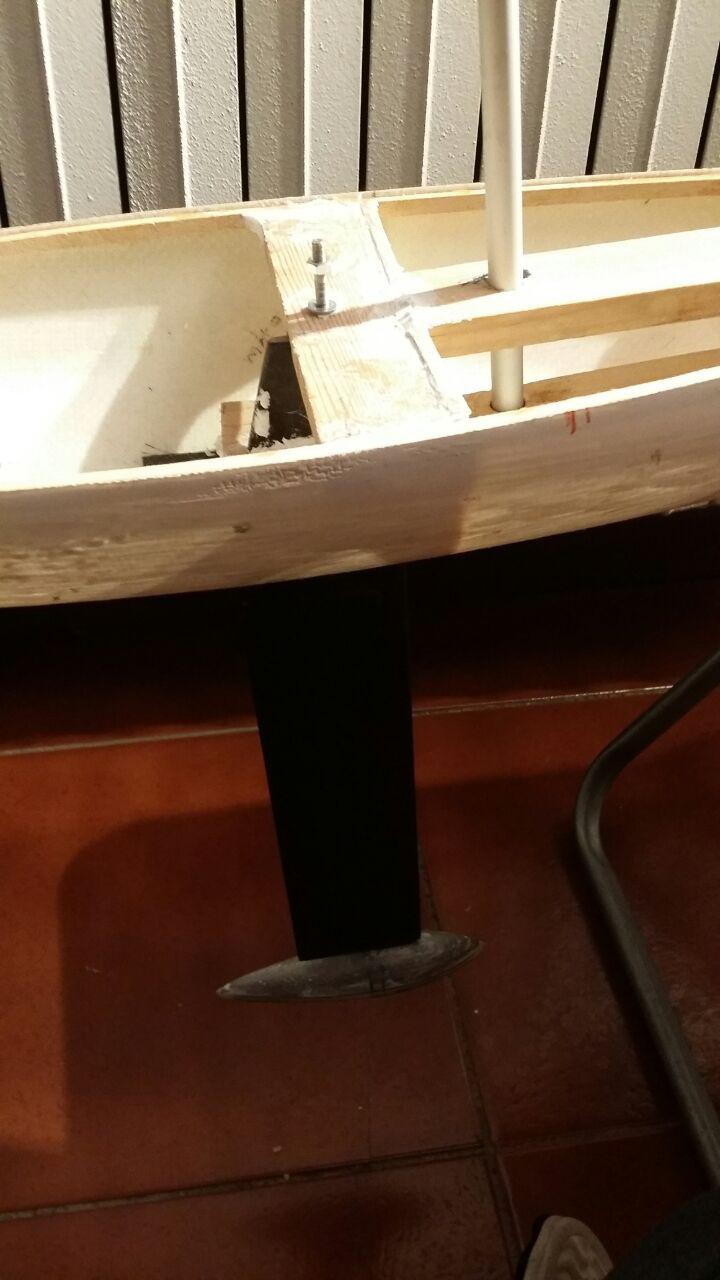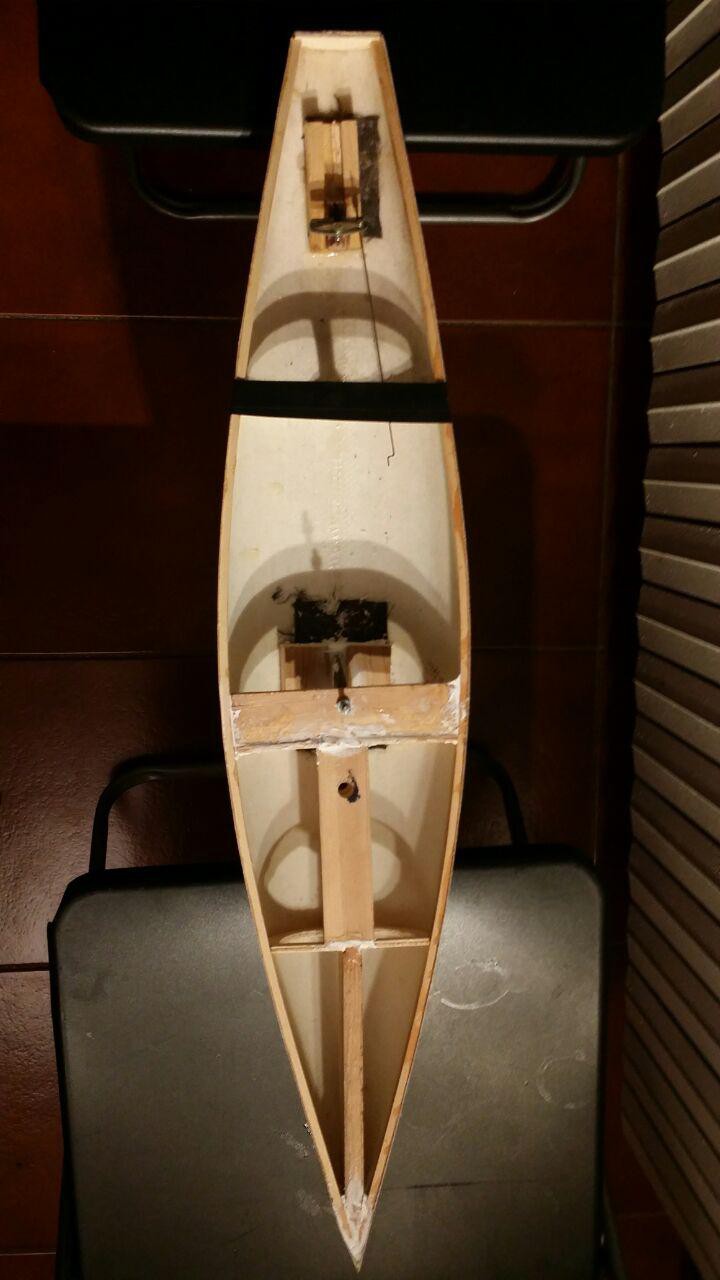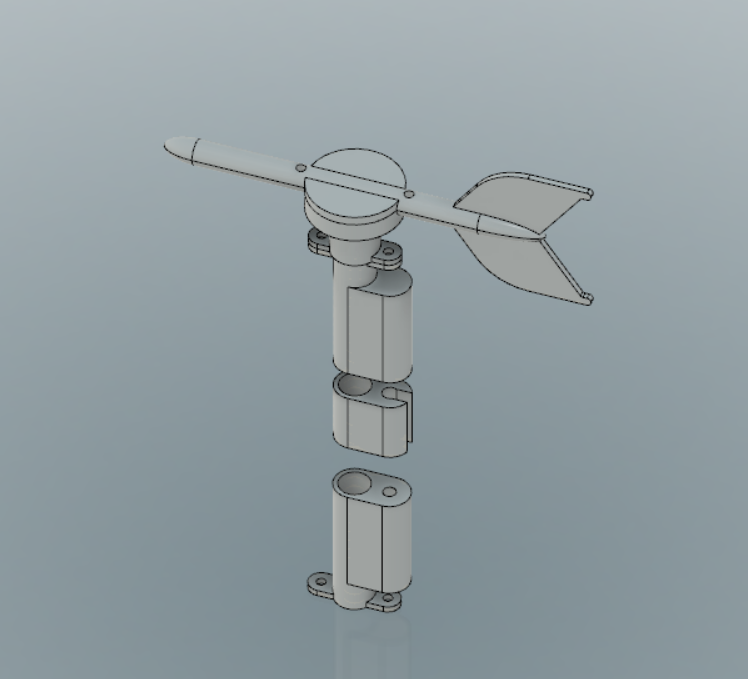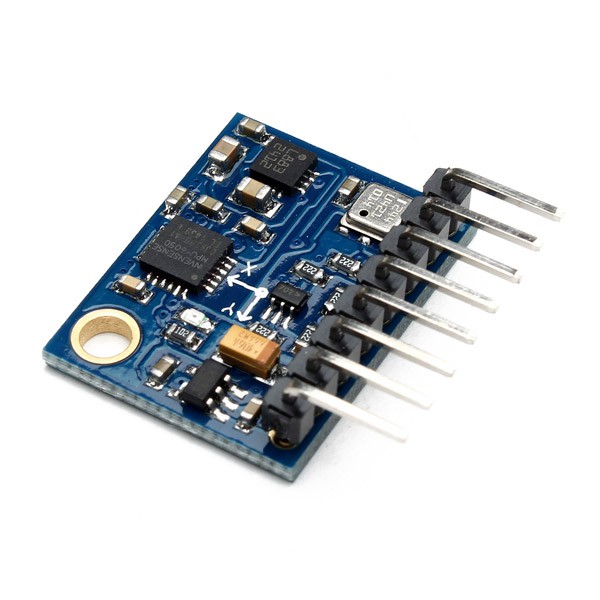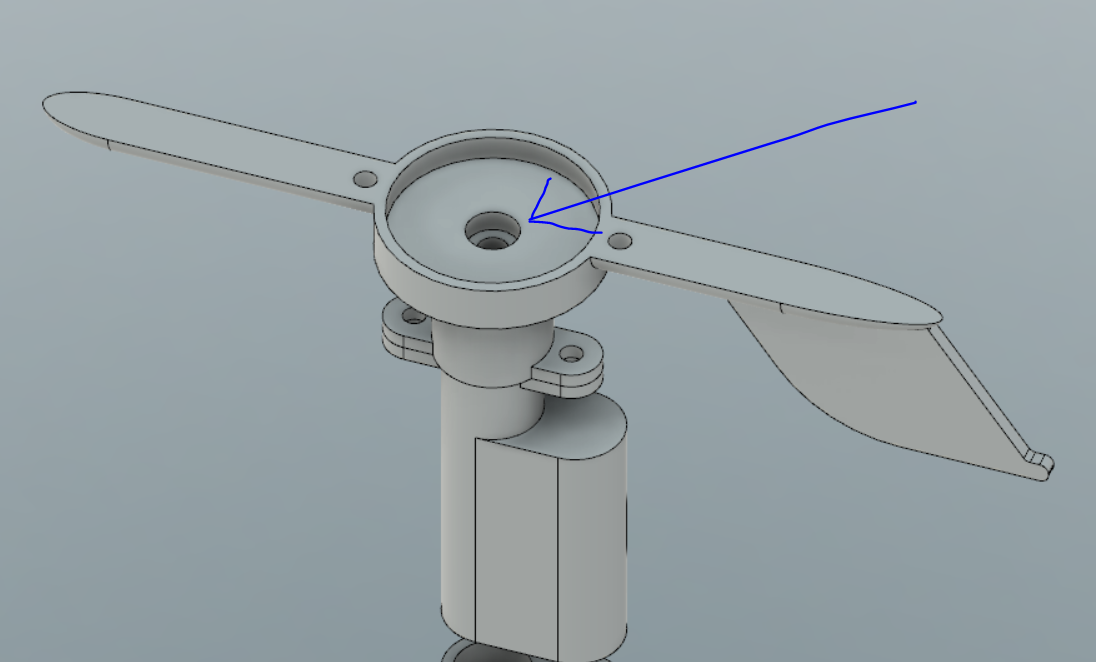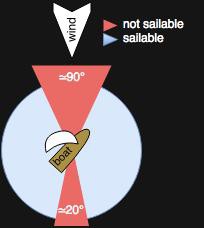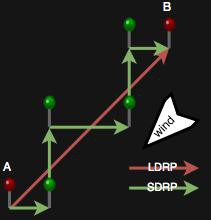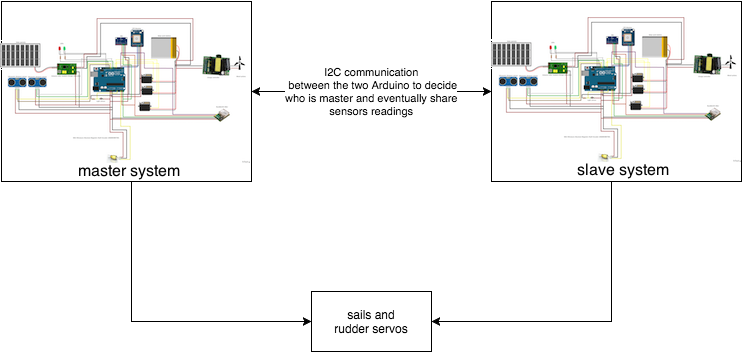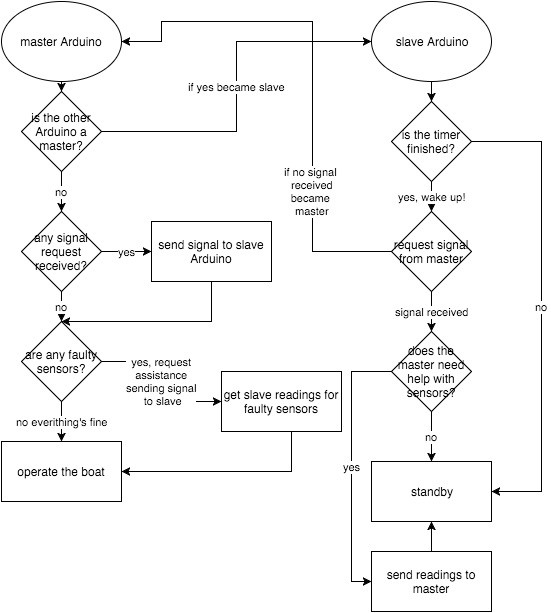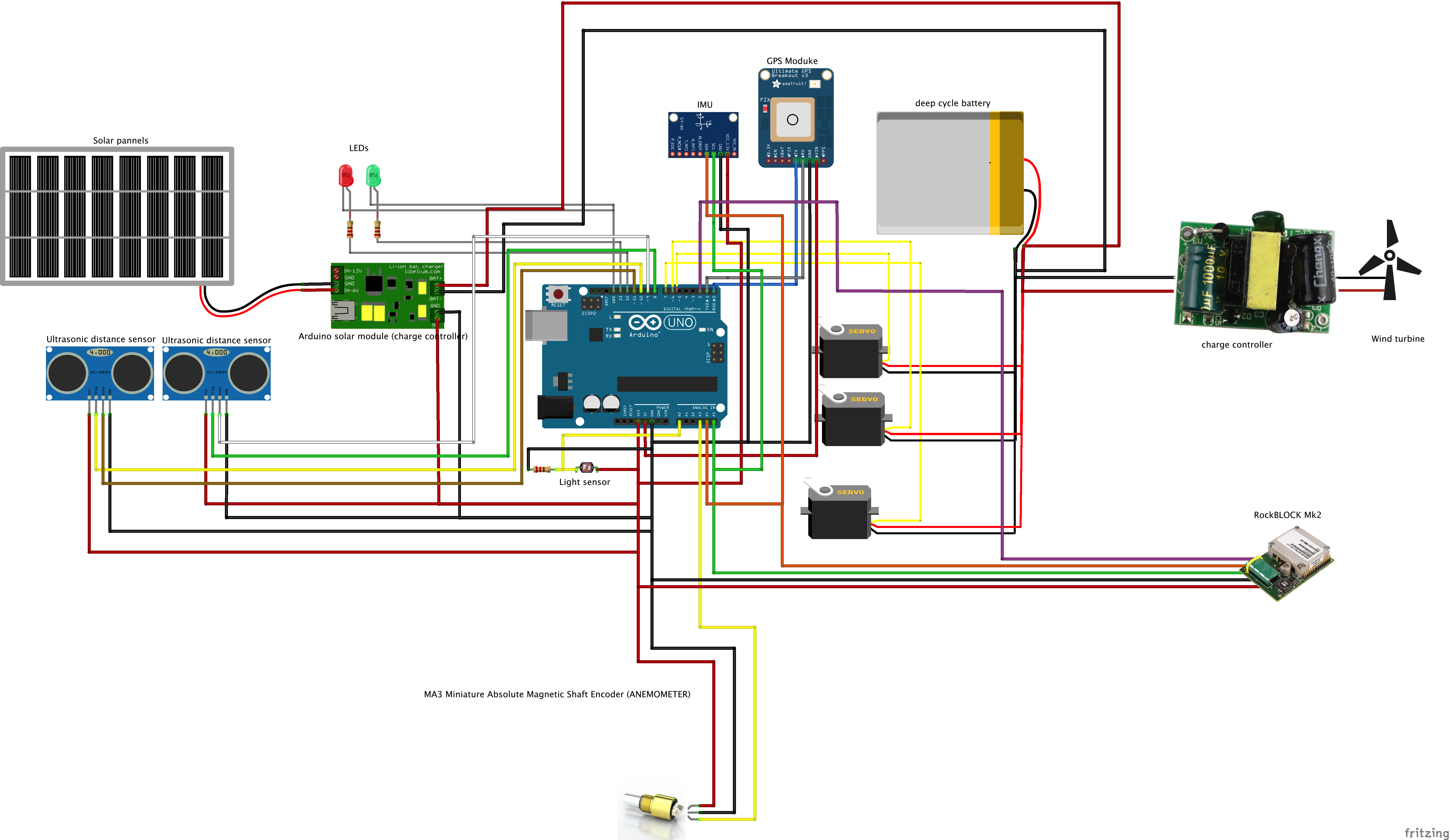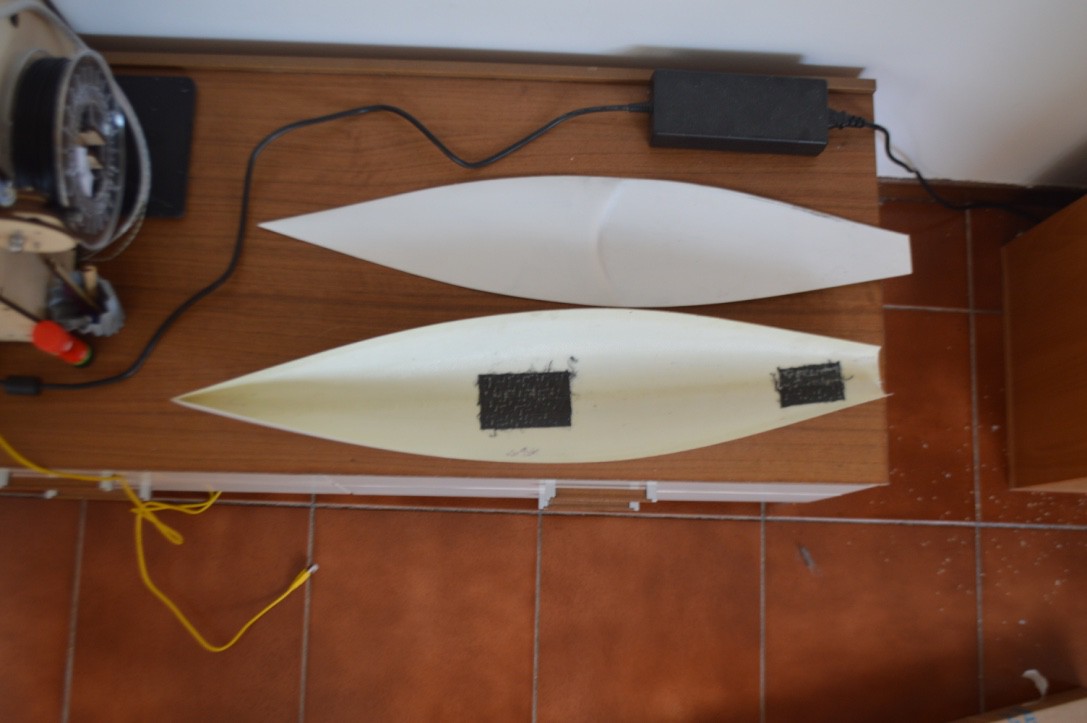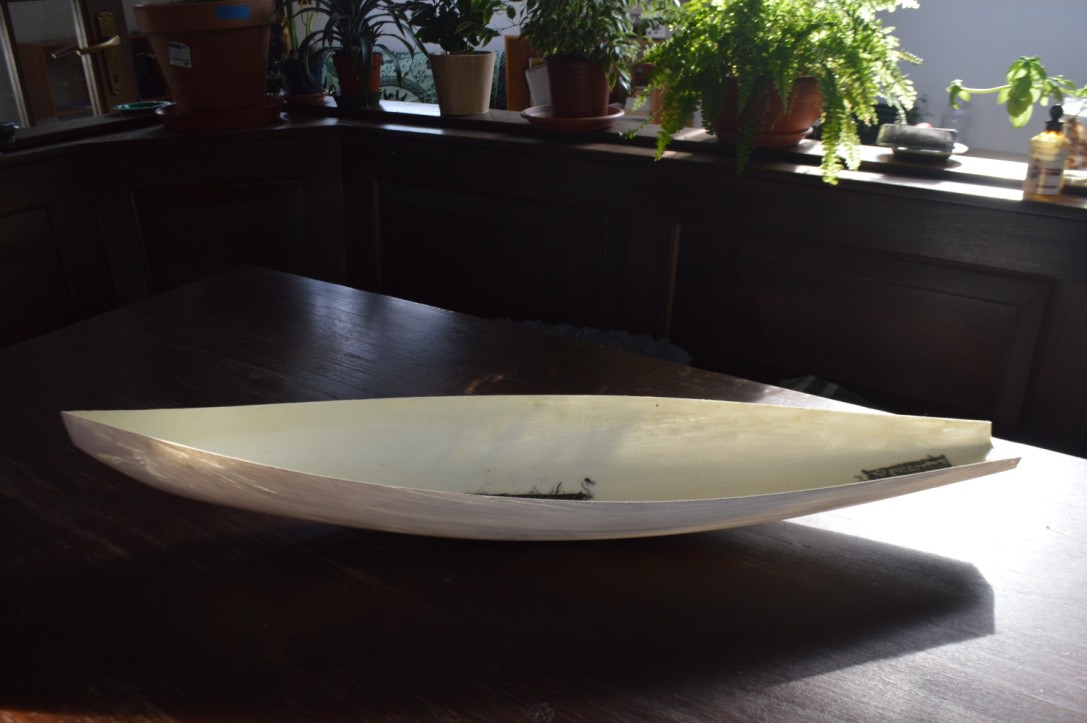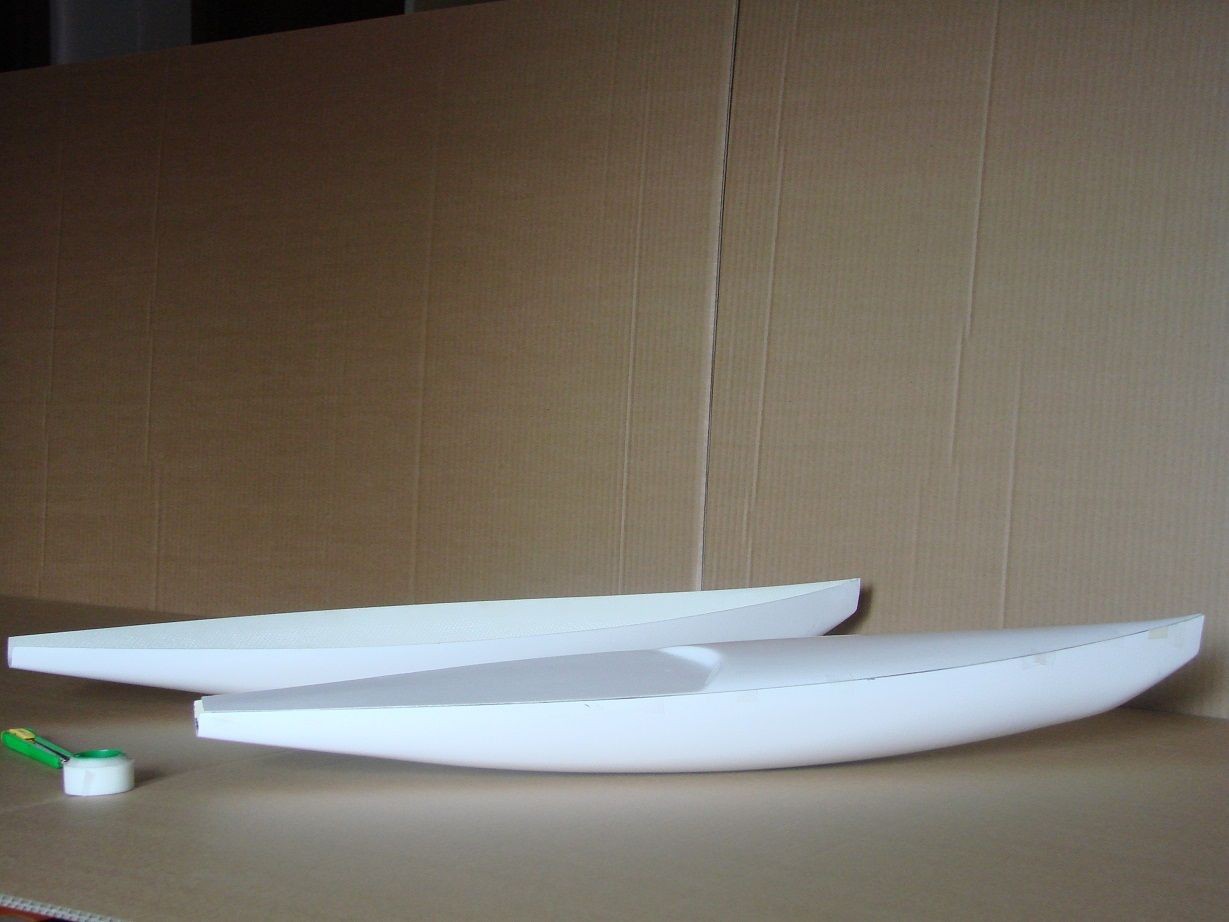-
power consumption analysis
12/01/2016 at 16:44 • 0 commentsThis is a table with the main power consumption that I will have. I'm planning to use a camera and image recognition, in addition to the sonar, to build a simple but effective obstacle avoidance system.
component
power mW
utilization % (estimation)
Arduino UNO/micro
5v * 25mA/50mA = 125mW/250mW if active)
5v * 4mA = 20mW (sleep mode and hardware modifications)
80-90%
HRXL‑MaxSonar (ultrasonic rangefinder)
3.3v * 3.1mA = 10.23mW
40%
IMU (inertial measurement unit) * 2
3.3v * 145-350µA = 0.725mW/1.75mW each
100%
GPS unit
3.3V * 30mA = 99mW (average)
3.3V * 12mA = 39.6mW (for the antenna)
10%
DYMOND D 47 Servo (for the rudder)
5V * 250mA = 1250mW
50%
SW5513-4MA Sailwinch Servo (for the sail)
5V * 110-350mA = 550mW/1750mW
??
So the total power consumption should be around:
1750mW + 1250mW * ½ + (39.6mW + 99mW) * 1/10 + 1.75mW * 2 + 10.23mW * ¼ + 250mW * 4/5 ≅ 2594.91mW ≅ 2.595W
An eolic vertical turbine with an efficency of 35% (a round down estimate from average efficency), diameter of 10cm, height of 50cm and a wind speed of 7m/s c.a. (based on the average wind speed in Italy) should produce c.a. 3.230W (source: http://www.windstuff.org/calc/calc.php)
If, in addition, I use 4 solar panels 85x115mm of 18V and 100mA I should get:
18V * (100mA * 4) ≅ 7.200mW = 7.2W and supposing an efficency of 40% (day/night, circuit losess, water, dust, etc..) I should get c.a. 2.88W
These are just estimations of course! Please feel free to correct me if I've said something wrong :)
-
hull construction
11/28/2016 at 18:24 • 0 comments -
anemometer
11/25/2016 at 12:05 • 0 commentsI've designed with autodesk fusion 360 the anemometer that I would like to use. It is attached to the mast. It is composed by two main hardware parts:
- The GY-87 IMU
- the 12.4mm 300Rpm 6 Wires 6 Conductors Capsule Slip Ring 240V AC for Monitor Robotic SRC012C
I didn't know about the existence of the second one, it is a very useful piece that allows to connect electric wires from two rotating components.
Both of them can be purchased for a few dollars on the web. The IMU will provide the wind heading and is placed in the anemometer rotating part:
while the second one will be placed between the rotating part of the anemometer and the base.
Here's the page with the STL files:
http://www.thingiverse.com/thing:1916259
I'm wondering if to add a dc motor a the front extremity of the "arrow" in order to get some more electricity, probably in the next log I will add it :)
-
sorry
10/04/2016 at 13:17 • 0 commentsHello, I'm writing this log to inform everybody that unfortunately, I will not be able to finish the project within the concourse deadline due to university apprenticeship and exams. However, even if a little bit slowly I will continue to update and work on this amazing project in which I really believe. I would like to thank Hackaday and its users for the opportunity they have given me! I will keep you posted :)
-
Software architecture overview
04/28/2016 at 13:17 • 0 commentsThe software of the sailboat will be based on a layered system which can be seen above. The behaviour is based on a incremental process of data refinement level by level. The main entities will be:
- Long Distance Route Planner (LDRP): it is the top level. It is not influenced by sensors readings nor by lower levels or obstacles. It divides the whole trip route in segments based on weather forecast, base-control choices and off-limit zones (eg coasts). As output it gives the next objective coordinates. The route is dynamic: the LDRP can change it in case of bad weather forecasts, base decisions or if the boat has drift away from the original route (due to marine currents or due to other meteorological phenomena) in any given moment.
- Short Distance Route Planner (SDRP): it takes as input the next objective coordinates and divides the route to reach it in segments based on wind direction and strength. It is mainly in charge of avoiding the "not sailable" zones (in the following picture), maintaining an optimized route in regard to the wind strength and avoiding marine obstacles.
Furthermore it can dynamically change the route in case of repentine changes of the wind conditions or if the boat has come too far from the next intermediate objective or if an obstacle is approaching. It gives as output the desired direction to follow in degrees) to reach the next intermediate objective.
The following picture represent a typical LDRP and SDRP interaction:
- At the bottom of the system there is the helmsman. It receives as input the desired direction from the SDRP (in degrees), the actual boat heading and speed. It operates the rudder computing (to put it simply) the difference between the SDRP desired direction and the actual boat direction and filtering the rudder movement speed with the actual boat speed to avoid rough tacking or jibing manoeuvres.
- The last component is the bowman. It is in charge of pull and release the sails. It is completely independent to all the other entities and it makes decisions only based on wind strength and boat heading. This independence imitate real life conditions in which communication between helmsman and bowman is mainly unnecessary.
I'm developing a little Java software that will visually simulate the path choosing algorithm in optimal conditions. It will also show the dynamic changing of the path in case of wind direction changes. Hopefully I will finish it soon and upload both the code and a demo version :)
-
Redundant sailing system
04/21/2016 at 13:22 • 0 commentsThanks to @Leonard that pointed out the possibility of creating a redundant system!
Redundancy is basically the duplication of critical components of a system with the intention of increasing reliability of the system.
In my case I'm going to use two Arduino that do the same task: sail the boat. In the event that one fails the other could take his place.
One is gonna be the master Arduino which in normal conditions operates the sailboat by himself. The other one is gonna be the slave Arduino that will provide its sensors readings in case of failure of sensors of the master Arduino or will substitute the master Arduino in case of complete failure. They will be located in two independent waterproof enclosures.
The only parts in common are the I2C bus between the master and the slave and the servos operating rudder and sails.
The slave Arduino will be in standby mode most of the time in order to prevent as much as possible power consumption, periodically it will wake up to send a signal over the I2C to the master to see if everything is working fine. It can also be activated by the master in case of necessity.
The master/slave choosing policy is quite simple: the slave periodically check if the master is alive and if it does not receive any answer switch to master mode. From its part the master periodically checks if the slave is not in master mode, if this occurs the master automatically switch to slave mode.
There can be a problem in the scenario in which the connection between the Arduinos fails but both of them are still operating. In this case there will be two master Arduino in competition for operating the boat. I'm evaluating two options:
- To use a control circuit as an intermediary between the two Arduinos and the sails and rudder. If it receives two signals it listens only to one, based on statistics calculated on previously received commands. Obviously this choice has one BIG gap: the control circuit itself is a weak point if it fails.
- The options that I'm actually more willing to consider is to create more than one I2C bus between the Arduinos. So if the first bus fails to deliver the signal the second will be used and so on.
If you have any questions or suggestions please feel free to comment :)
-
Electronics scheme
04/14/2016 at 12:59 • 11 commentsSo here's the first electronics diagram.
It's schematic (and simplified) but enough detailed to give an idea.
It doesn't represents all the hardware parts that I've decided to use but the main ones are here. So here are the new additions:
- I've decided to go for an Rock 7 RockBLOCK which is very useful to communicate with the sailboat in all weather situation and everywhere on the globe to get instant readings about the navigation and making adjustments to the route. I discovered some nice API's and plenty of documentation regarding it (for example http://arduiniana.org/libraries/iridiumsbd/ and http://makezine.com/projects/make-37/iridiumsatellite/ for info).
- An Arduino Uno will be used instead of a combination of Raspberry and Arduino because (as @Nate Bowen pointed out) it's statistically much riskier to use an OS supervising everything and it would cause an unnecessary "overhead" to the whole system.
- I'm evaluating the idea of adding this little hydro generator http://www.seeedstudio.com/depot/36V-Micro-hydro-generator-p-634.html attached to the rudder.
EDIT:
- Thanks to the suggestion of @M. Bindhammer I added a new picture of the diagram to make it more understandable :)
- Also I added a light sensor to decide when to activate the position LEDs
- Yet to be decided wich LEDs I will actually use, the ones in the schema are just representative.
-
Hull update
04/06/2016 at 09:21 • 0 commentsI found this hull on the web. It is quite good to me because of the possibility to customize whatever I want.
The purchase price amounts to € 29 plus € 9 of delivery charges.
If, like me, you’re not a nautical expert but you wish to build up everything from scratch,
my advice is to search the hull on websites like ebay.
The best keywords to use are: “boat hull”, “fiberglass sailboat hull” or similar.
You’ll have a chance to find many boats with interesting designs with could be traded close to you allowing you to save money on delivery charges.
For the realization of the internal frame I’m going to use a 3d printer in order to optimize mass distribution and secure electronic components.
I just wanted to thank @Durvir for letting me know that there are several “sailbot” competitions all over the world.
I found a very interesting source of information (regarding both hardware and software), to witch I’m going to take a deep look :)
Here it is:
Green powered sailboat
The goal is to build a tiny autonomous sailboat able to travel potentially forever, powered using solar panels and wind.
 silvio biasiol
silvio biasiol